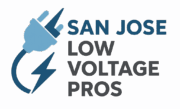What is Defined as Low Voltage?
Introduction
When you hear the term low voltage, you might think of small household gadgets, LED lights, or even your phone charger. But in electrical engineering, low voltage has a very specific definition, governed by international standards and safety regulations. Understanding this concept is essential not only for electricians and engineers but also for homeowners, business owners, and anyone working around electrical systems.
In this guide, we’ll explore what low voltage really means, how it is officially defined, its practical applications, safety considerations, and common misconceptions.
At San Jose Low Voltage Pros, we specialize in providing expert wiring and cabling solutions tailored to your needs.
Table of Contents
- What is the Official Definition of Low Voltage?
- International Standards Defining Low Voltage
- Low Voltage vs. High Voltage: Key Differences
- Applications of Low Voltage Systems
- Safety Risks and Precautions
- Common Misconceptions About Low Voltage
- Future of Low Voltage Technology
- Conclusion
- FAQs
What is the Official Definition of Low Voltage?
In simple terms, low voltage refers to electrical voltages that fall below a certain threshold, typically lower than what is considered hazardous to humans or suitable for high-power transmission.
According to the International Electrotechnical Commission (IEC 60038 standard):
- Low voltage (LV): 50 to 1,000 volts AC, or 120 to 1,500 volts DC
- Extra-low voltage (ELV): Below 50 volts AC or 120 volts DC
- High voltage (HV): Above 1,000 volts AC or 1,500 volts DC
This means that while your home’s 120V or 240V electrical system is “low voltage” by industry standards, it can still pose serious risks if mishandled.
International Standards Defining Low Voltage
Different organizations have slightly varied definitions of low voltage. Here are the key governing bodies:
- IEC (International Electrotechnical Commission): Sets global standards for AC and DC voltage classifications.
- NFPA (National Fire Protection Association, USA): Through the National Electrical Code (NEC), categorizes low voltage wiring for residential and commercial use.
- OSHA (Occupational Safety and Health Administration, USA): Provides safety guidelines for low voltage electrical work.
- European Union (EU): The Low Voltage Directive (2014/35/EU) governs equipment safety in the 50V–1,000V AC and 75V–1,500V DC ranges.
👉 The takeaway: “Low voltage” doesn’t mean “safe voltage.” It’s simply a classification for standardization and regulation purposes.
Low Voltage vs. High Voltage: Key Differences
| Feature | Low Voltage (LV) | High Voltage (HV) |
|---|---|---|
| Voltage Range | 50–1,000V AC / 120–1,500V DC | Above 1,000V AC / 1,500V DC |
| Typical Use | Residential, commercial buildings, lighting, electronics | Power transmission, industrial equipment |
| Safety Risk | Can cause shocks and burns but lower arc flash risk than HV | Severe shock, burns, arc flash, and fatal accidents |
| Equipment Needed | Insulated tools, PPE, circuit breakers | Specialized insulation, switchgear, protective clothing |
Applications of Low Voltage Systems
Low voltage is everywhere in daily life. Some common applications include:
- Residential and Commercial Wiring: Standard outlets, lighting, HVAC systems.
- Telecommunications: Telephone lines, internet cabling, and network infrastructure.
- Security Systems: CCTV cameras, access control systems, alarms.
- Smart Homes: IoT devices, doorbells, thermostats, and smart lighting.
- Automotive Industry: Electric vehicle (EV) charging systems, in-car electronics.
- Renewable Energy: Solar photovoltaic systems often operate in low voltage ranges.
Safety Risks and Precautions
Although classified as “low,” these voltages can still injure or kill if mishandled. Risks include:
- Electric shocks causing burns or cardiac arrest.
- Short circuits leading to fire hazards.
- Improper wiring resulting in equipment failure.
Precautions include:
- Following NEC and OSHA safety codes.
- Using proper personal protective equipment (PPE).
- Installing residual-current devices (RCDs) or ground-fault circuit interrupters (GFCIs).
- Ensuring licensed professionals handle installation and repair.
Low voltage is generally classified within certain ranges. To learn more about the specific thresholds, check out our detailed guide on how many volts is considered low voltage.
Common Misconceptions About Low Voltage
- “Low voltage is harmless.” → False. Even 120V can be fatal under the right conditions.
- “Low voltage only applies to batteries.” → False. Many building systems (240V AC) are also considered low voltage by standards.
- “Extra-low voltage means no risk.” → False. ELV reduces but doesn’t eliminate risks.
Future of Low Voltage Technology
The demand for low voltage systems is growing due to advancements in:
- Smart buildings and IoT: Increasing reliance on connected devices.
- Renewable energy integration: Solar, wind, and storage systems often run on LV.
- Electric vehicles: Charging infrastructure and LV electronics in vehicles.
- Energy efficiency regulations: Push toward LED lighting and efficient LV circuits.
Expect more hybrid systems that integrate extra-low voltage DC power with renewable energy and smart automation in the near future.
Conclusion
Low voltage is not just a buzzword—it’s a technical classification with strict international definitions. While often safer than high voltage, it still presents risks if not properly managed. From powering homes and offices to driving future technologies like smart cities and EVs, low voltage systems form the backbone of modern electrical infrastructure.
Understanding what low voltage is—and what it isn’t—helps ensure safe use, compliance with regulations, and smarter adoption of new technologies.
